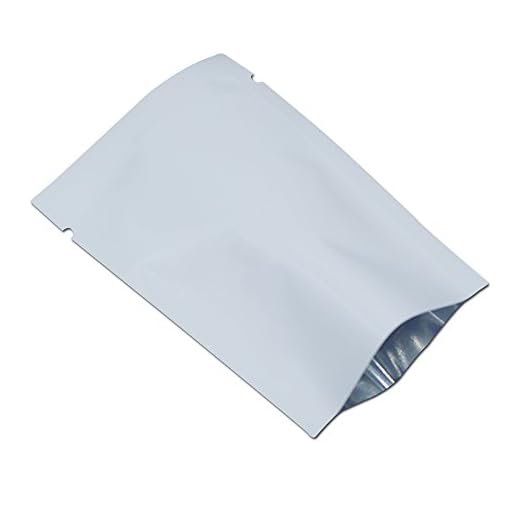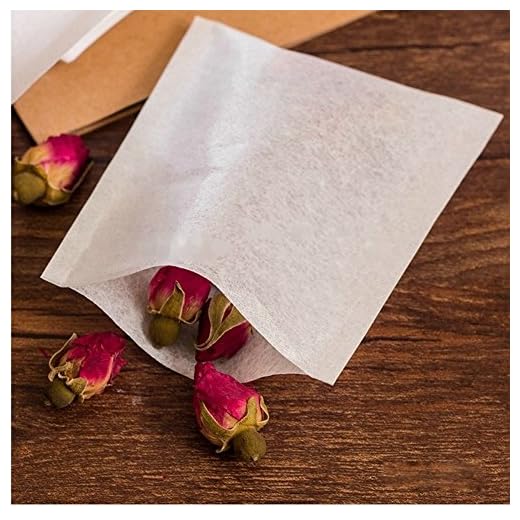



Security checkpoints: Dry infusion sachets are permitted through most airport screeners in both cabin and hold compartments. Powdered forms (matcha, instant mixes) larger than 12 oz / 350 mL in carry-on may require additional inspection or testing in the United States; consider moving powders to checked baggage to avoid delays.
Liquid rule: Prepared brews count as liquids for cabin travel – container limit is 100 mL (3.4 oz) per item. Commercially sealed ready-to-drink pouches above that volume must go into checked compartments or be purchased post-security.
Customs and biosecurity: Many nations accept factory-sealed dry herbals, but several enforce strict agricultural controls. Australia, New Zealand and some Pacific islands routinely require declaration of all plant products; undeclared items are subject to seizure and penalties. Mixes containing seeds, roots, leaves with soil, or animal-derived additives face higher refusal rates.
Packing recommendations: Keep products in original sealed manufacturer packaging with a clear ingredient list and purchase receipt when carrying larger quantities. Limit quantities to personal-use amounts and label containers plainly to speed inspection. For powdered blends, label weight and move to checked compartments if screening would cause significant hold-up.
Before departure: Check the airline’s carriage rules and the destination country’s agriculture or customs website for specific prohibitions and declaration requirements; when in doubt, declare on the arrival form and present items at inspection to avoid fines or confiscation.
Rules for transporting sealed infusion sachets
Store factory-sealed infusion sachets in original labeled boxes or foil pouches; carry them in cabin baggage or place in checked hold while complying with security and entry declarations.
Security screening
U.S. Transportation Security Administration treats commercially sealed solid infusions as permitted items in carry-on and checked items. Powdered or instant mixes exceeding 12 oz (≈350 mL) in cabin baggage are subject to additional screening and may be refused on some international sectors; present powders separately at the checkpoint to expedite inspection.
Customs and biosecurity
Many destinations apply strict controls to plant-derived consumables. Australia and New Zealand require declaration of all botanical foodstuffs; sealed retail sachets can still be inspected, treated, or destroyed. USDA APHIS permits most fully processed, commercially sealed herbal blends but recommends verification against destination rules. Blends containing dried fruit, seeds, nuts, dairy or animal-derived additives face higher scrutiny or bans. For commercial quantities, obtain import permits, phytosanitary certificates and invoice documentation before shipment.
Packing tips: retain original ingredient lists and purchase receipts; keep small personal-quantity boxes accessible for inspection; avoid transferring contents into unlabelled containers; if in doubt, declare items on arrival forms to prevent fines or seizure.
Carry-on vs checked baggage: allowed quantities of sealed infusion sachets
Recommendation: limit cabin bags to under 12 oz (≈340 g) of retail-sealed infusion sachets to avoid powder screening; larger quantities should travel in checked baggage and be declared at arrival for biosecurity-controlled destinations.
Carry-on limits
United States (TSA): dry infusion sachets are permitted in carry-on. Powders exceeding 12 oz (≈340 g) require separate screening and may be restricted on certain international sectors. Store unopened boxes where security staff can access them quickly and present them separately when requested.
European airports: small personal-use amounts generally pass security without issue; bulk volumes may prompt secondary inspection or carrier refusal under cabin-size/weight rules (typical cabin allowance ~7–10 kg or single-item dimension limits). Airlines set final acceptance policies.
Checked-baggage limits
Checked/hold baggage accepts larger volumes but remains subject to airline weight limits (commonly 23 kg for standard checked pieces, 32 kg for higher allowances). Commercial-scale consignments often require import permits or phytosanitary certificates for countries with strict plant-product controls (notably Australia, New Zealand, some Pacific nations).
Documentation and presentation: retain original retail seals and purchase receipts, separate sachets from loose powder, and declare herbal/plant products where required. Undeclared items may be seized and fines applied.
If quantities exceed typical personal-use expectations, split into multiple checked pieces, send via courier with correct paperwork, or purchase at destination; verify carrier policies and destination agricultural rules before travel.
Security screening: will infusion sachets trigger powder rules or extra inspection
Store retail-sealed infusion sachets in checked baggage when large-volume powdery contents are involved; small sealed sachets or whole-leaf sachets usually pass screening without special restrictions, while loose fine powders commonly prompt additional checks.
- Detection methods: X‑ray imaging plus explosive trace detection (ETD) swabs are routinely used for powders; if an item appears indistinct or swab results are inconclusive, manual inspection and possible confiscation follow.
- Form matters: whole-leaf infusions and intact paper or mesh sachets rarely look like regulated powders on X‑ray; powdered products (matcha-style, instant mixes, ground blends) resemble powders and are treated more strictly.
- Packaging helps: clear retail packaging with visible labels and ingredient lists reduces interrogation time; unlabeled loose powder in plastic bags increases likelihood of ETD swabs and secondary screening.
- Authority practice: major security agencies (TSA in the United States, CATSA in Canada and many European/UK airports) apply extra screening to carry-on items that appear powder-like–policies and thresholds vary by country and airport.
- Before travel: check departure and arrival airport security pages and the carrier’s rules for powdered goods; airline agents and airport security websites list current screening advice.
- At screening: present sealed retail boxes or clearly labeled sachets separately if requested; avoid transferring powders into unmarked zip bags.
- If questioned: provide purchase receipts or ingredient lists to speed identification; accept ETD swabbing or request transfer of the item to checked baggage if possible.
- To minimize disruption: consolidate powdered infusions into small, labeled containers for cabin carriage, keep whole-leaf sachets in original retail wrapping, and avoid loose fine powder stashes in carry items.
Destination customs: countries that restrict leaf infusions or require declaration
Declare all plant-based infusions and herbal sachets on arrival forms; keep items in original sealed retail packaging with full ingredient lists and purchase receipts for inspection.
High-restriction destinations
Australia and New Zealand: mandatory declaration of all plant and animal foodstuffs on the passenger card. Commercially sealed retail boxes of dried leaf infusions are usually admissible after inspection, but fresh herbs, roots, seeds or blends containing unprocessed plant parts frequently require treatment or are prohibited. Heavy fines and quarantine treatment apply for non-declared items.
Singapore: strict import controls on botanical products. Dried retail sachets are commonly allowed if declared, but ingredients such as ginseng, certain fungi and controlled herbs may need permits; undeclared prohibited items will be seized and fines applied.
Japan: all plant products must be declared to Customs and Plant Quarantine. Dried infusions in factory-sealed packaging normally pass inspection, but blends with fresh components or soil contamination are subject to refusal or quarantine.
Common rules for other regions
United States: declare plant products to CBP; dried leaf and herbal infusion packets generally permitted for personal use but specific herbs (e.g., kava, ephedra) may face restrictions. Inspections are handled by USDA/APHIS and CBP.
European Union and United Kingdom: retail dried infusions usually allowed without a phytosanitary certificate for personal-use quantities, but large consignments require import documentation and customs declaration; certain herbal species are restricted under national plant-health lists.
Canada: CFIA requires declaration of plant products; dried retail sachets typically acceptable, while blends with fresh roots, bulbs or soil contamination may be denied entry or require treatment.
China and South Africa: declare plant-origin products; customs inspections may request invoices and product specifications, and some botanical ingredients are prohibited or require import permits.
Practical checklist before travel: keep items factory-sealed with visible ingredient lists and receipts; separate infusion sachets for easy inspection; declare all botanical products on arrival forms; avoid quantities that suggest commercial intent; for shipments or bulk quantities obtain a phytosanitary certificate or import permit. For packing gear and travel cases see best luggage sale cyber monday.
Packaging and labeling to minimize delays and avoid confiscation
Store infusion sachets in original sealed retail pouches whenever possible; if transfer into alternate containers is necessary, use transparent resealable bags or vacuum-sealed pouches and apply printed labels that state product name, net weight (grams and ounces), country of origin, full ingredient list, lot number and a contact phone or website.
Labeling checklist
Include: product designation (e.g., “dried leaf infusion”), net weight per unit, total weight, manufacturer name, production/expiry dates, country of origin, ingredient breakdown using common English names, and proof-of-purchase reference or invoice number; use waterproof adhesive labels or heat-shrink sleeves and include an internal paper inventory that mirrors the external label.
Packaging tips for inspection and declaration
Keep quantities consistent with personal-use expectations by splitting large amounts into multiple clearly labeled units of under 2 kg each; tape a copy of the retail receipt to one unit and place a second copy in carry-on accessible for inspection by officials. For international destinations, add a translation of the label into the official language(s) of the destination country. Avoid loose powdered formulations: retain sachet or leaf form to reduce powder-rule screening. Photograph labels and receipts before travel for remote evidence (a compact point-and-shoot works well: best digital camera for 10000 rupees).
Personal-use vs commercial quantities: permits and documentation thresholds
Declare consignments above 2 kg or if intended for resale; obtain an import permit, phytosanitary certificate and full commercial documentation for any sale-oriented shipment.
Operational thresholds used by many customs and biosecurity agencies:
| Category | Typical quantity range | Required documentation | Practical indicators |
|---|---|---|---|
| Personal / samples | Up to 2 kg | Retail packaging, receipts, travel itinerary (if carried by passenger) | Multiple small retail sachets, mixed varieties, no invoice addressed to a business |
| Small commercial | 2–20 kg | Commercial invoice, packing list, HS code, seller contact, possible import permit or registration | Consistent batch sizes, identical cartons, invoices showing unit pricing |
| Bulk commercial | Over 20 kg | Import license, phytosanitary certificate (export country NPPO), certificate of origin, bill of lading/airway bill, commercial invoice, supplier HACCP/food-safety docs | Palletized cargo, pallets with commercial seals, freight forwarding arrangements |
Classification and documentary checklist:
– Harmonized System: assign correct HS code (true dried-leaf infusion products typically fall under chapter 09; confirm code with customs or broker).
– Phytosanitary certificate: required by many destinations for plant-origin products entering via mail, courier or freight when commercial quantities or unprocessed leaf material are involved; obtain from the exporter’s national plant protection organization (NPPO).
– Import permit: mandatory in several jurisdictions (Australia, New Zealand, some Gulf states) before arrival for any commercial import; apply through the destination’s biosecurity or agricultural authority and attach permit number to shipping documents.
– Commercial invoice & packing list: must show unit value, total value, net/net weight, country of origin and contact details of seller/buyer; customs use declared value to assess duties and VAT.
– Certificate of Origin and food-safety certifications: requested by importers or customs for preferential duty treatment or risk-based clearance; maintain supplier HACCP, GMP or ISO documentation for faster release.
How to substantiate a personal-use claim at border control:
– Present retail-format units (individual retail wrappers), original receipts under passenger name or credit-card slip, and travel itinerary indicating personal travel.
– Avoid consolidated commercial packaging (uniform cartons, bulk sealed sacks) and remove invoices addressed to businesses from passenger-carry items.
How to prepare commercial consignments to prevent detention or rejection:
– Pre-clear by securing import permits and confirming admissibility with the destination authority; include phytosanitary certificate and explicit HS code on all shipping paperwork.
– Use a customs broker for tariff classification, duty estimation and preparation of arrival documentation; label shipments with product name (use non-ambiguous botanical description), net weight, and producer/exporter details.
Penalties and consequences:
– Undeclared commercial shipments commonly face seizure, fines, delayed release, or destruction; customs may reclassify passenger-declared items as commercial based on volume and evidence.
– Failure to present required phytosanitary or import permits can trigger quarantine treatment at importer expense or return to origin.









